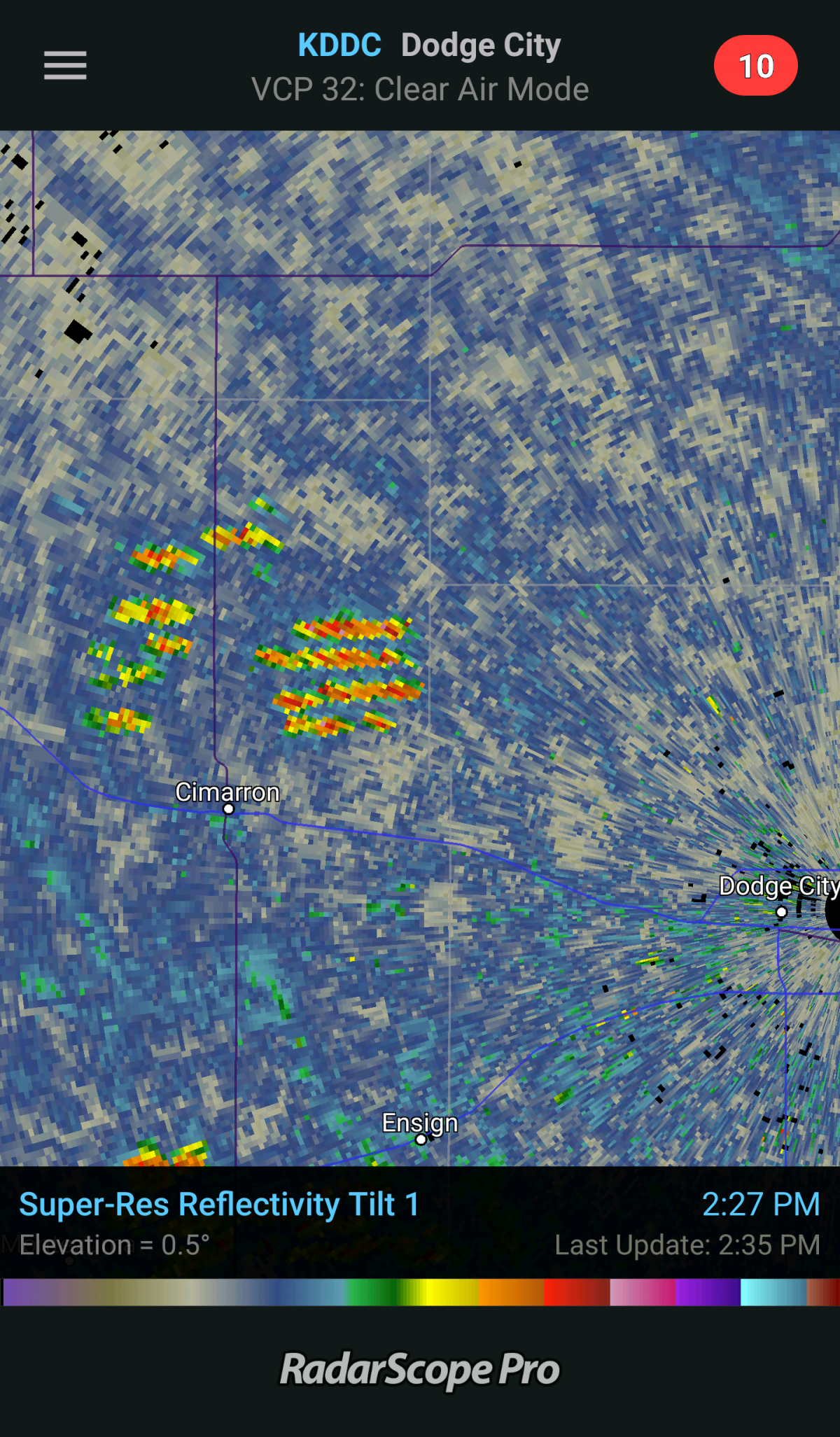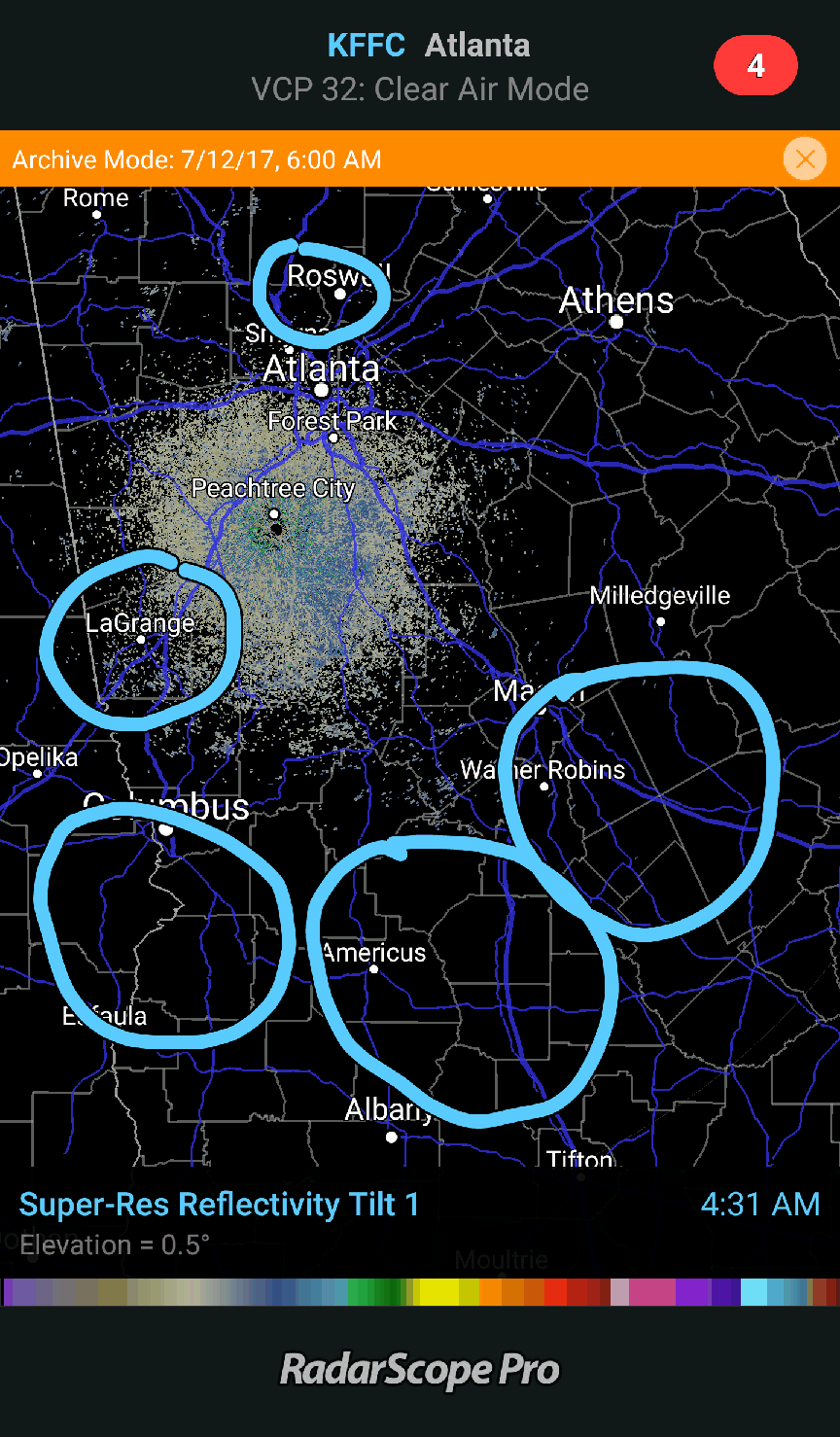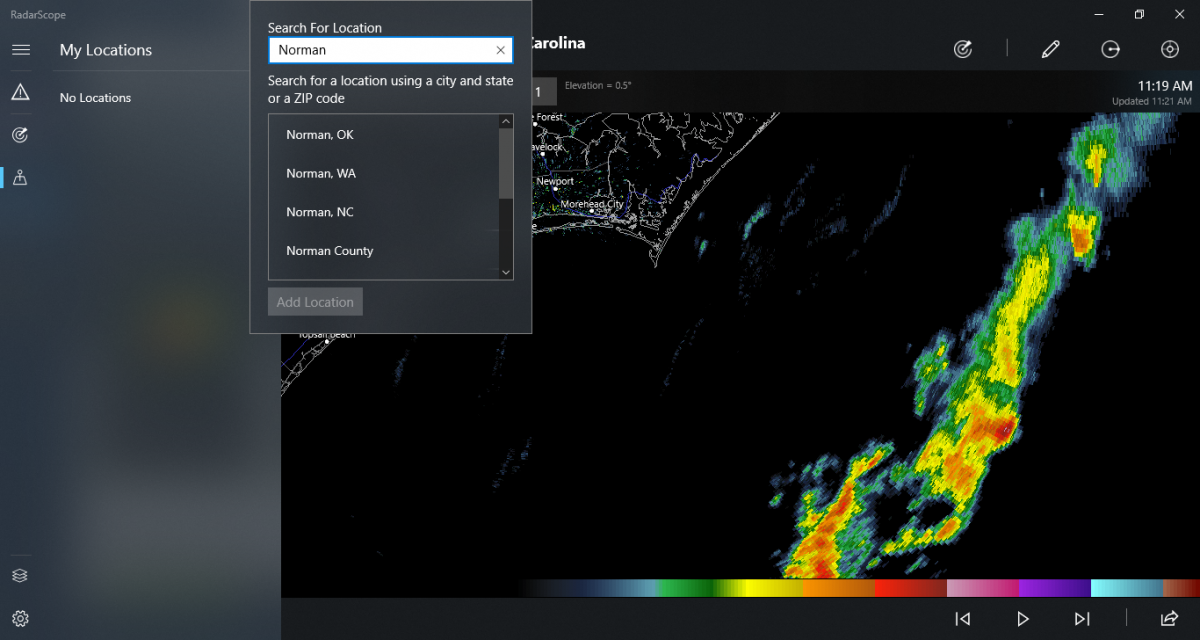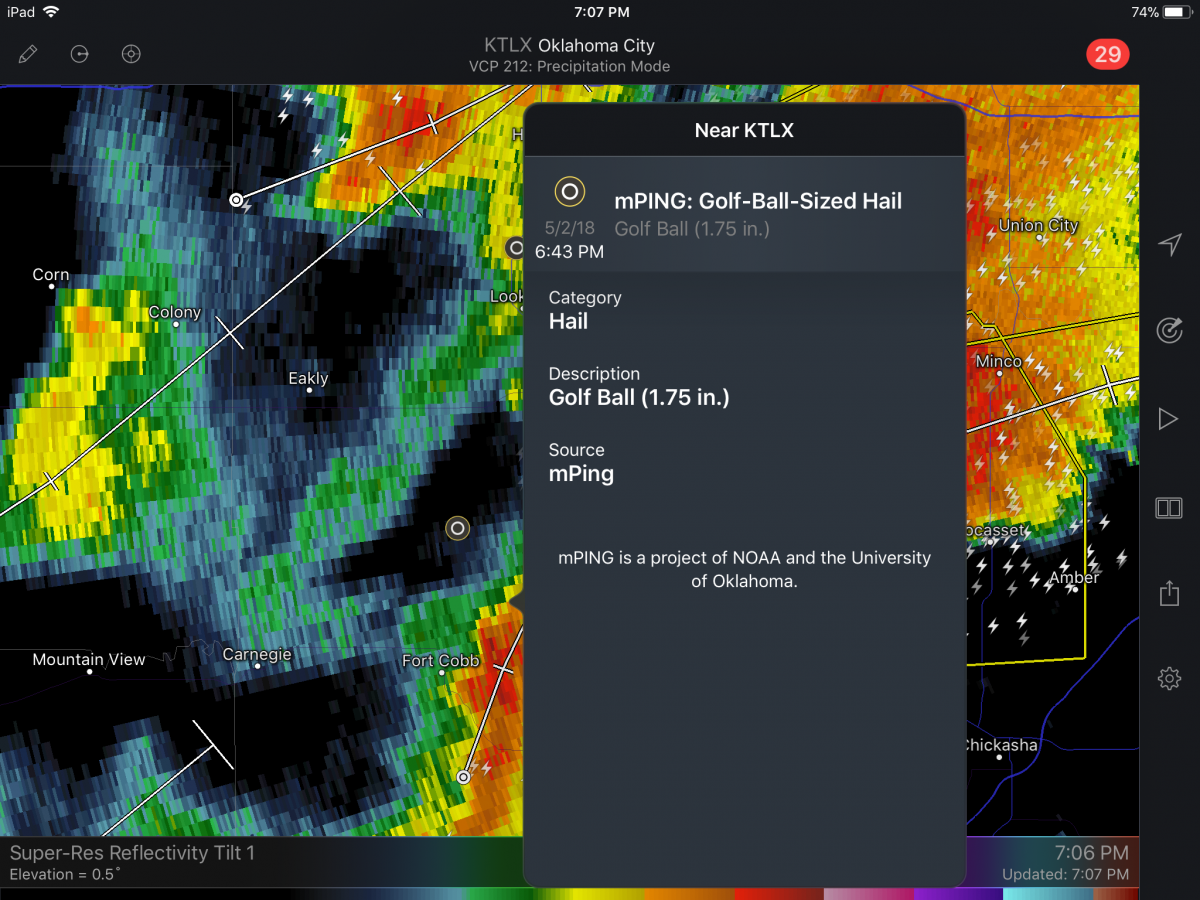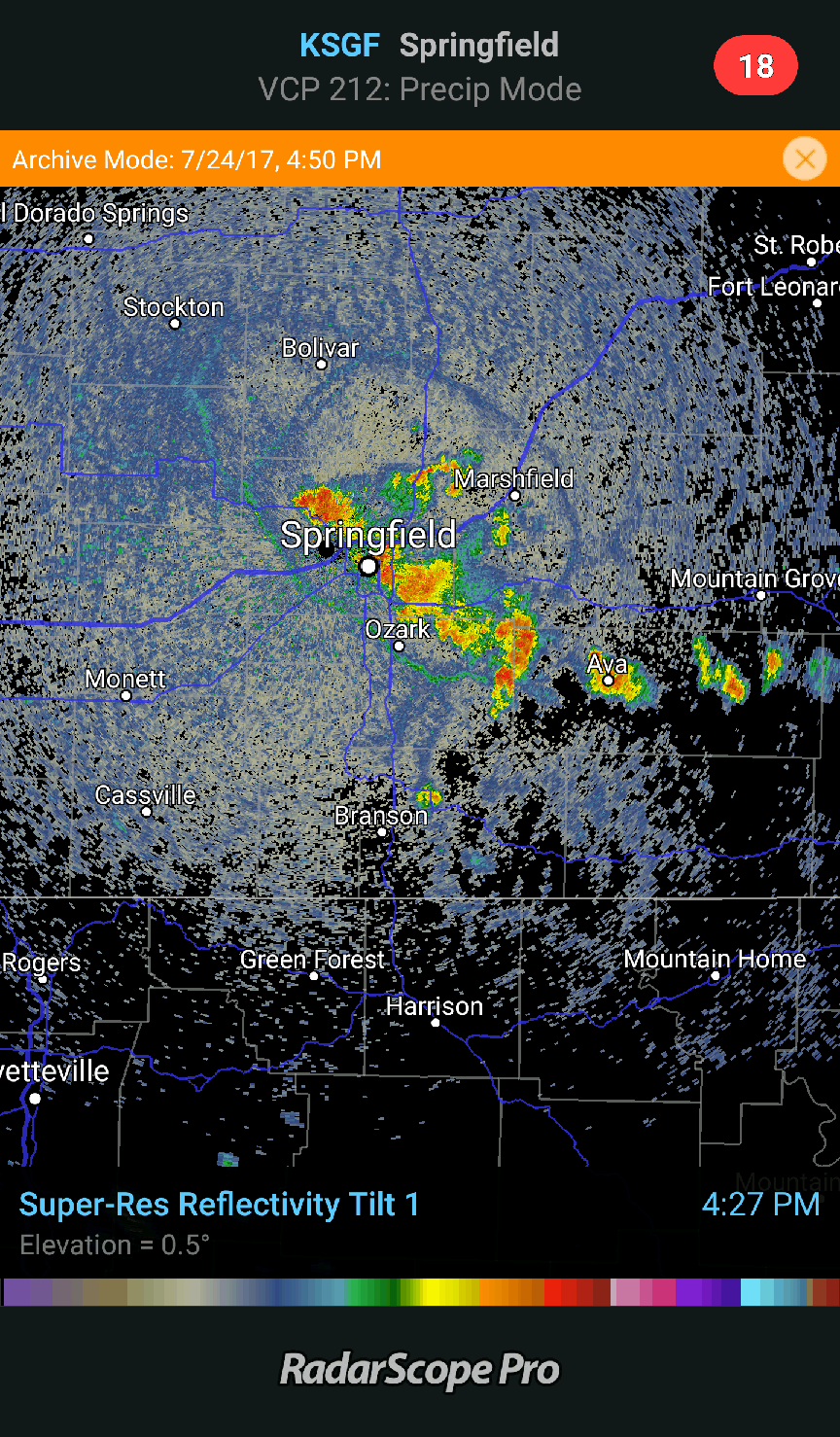The third part of the series will focus on various forms of ground clutter and miscellaneous things like smoke and chaff. Ground clutter is generally characterized by isolated, noisy large values of reflectivity and velocity that move very little if at all. Sometimes there will be pixels of missing/no data/zero within a group of pixels with high values. The correlation coefficient is generally very low, and differential reflectivity tends to be near zero but can be variable. When watching a loop, it tends to suddenly appear and disappear in the same area, rather than moving. Some ground clutter is almost constant, but in general, it tends to be worst during the night or early in the morning. Smoke and chaff can be most readily distinguished from precipitation by the low correlation coefficient. Satellite data can also be helpful for determining if there is a fire or significant cloud cover in the area of interest.
Wind Farms, Smoke, and More
